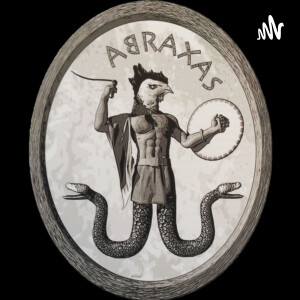
SHOCKING Sumerian Roots of the BIBLE | DOCUMENTARY
 2023-08-24
2023-08-24
https://www.patreon.com/GnosticInformant Please Consider joining my Patreon to help finding scholars to bring on. Any amount helps me. Thank you existing Patrons. 2nd Channel: https://www.youtube.com/@LateNiteGnosis Follow me on Twitter: https://twitter.com/NealSendlak1 Discord: https://discord.com/invite/uWBZkxd4UX Most historians have suggested that Sumer was first permanently settled between c. 5500 – c. 3300 BC by a West Asian people who spoke the Sumerian language (pointing to the names of cities, rivers, basic occupations, etc., as evidence), a non-Semitic and non-Indo-European agglutinative language isolate. The Blau Monuments combine proto-cuneiform characters and illustrations of early Sumerians, Jemdet Nasr period, 3100–2700 BC. British Museum. Others have suggested that the Sumerians were a North African people who migrated from the Green Sahara into the Middle East and were responsible for the spread of farming in the Middle East. However, with evidence strongly suggesting the first farmers originated from the Fertile Crescent, this suggestion is often discarded. Although not specifically discussing Sumerians, Lazaridis et al. 2016 have suggested a partial North African origin for some pre-Semitic cultures of the Middle East, particularly Natufians, after testing the genomes of Natufian and Pre-Pottery Neolithic culture-bearers. Alternatively, a recent (2013) genetic analysis of four ancient Mesopotamian skeletal DNA samples suggests an association of the Sumerians with Indus Valley Civilisation, possibly as a result of ancient Indus–Mesopotamia relations. According to some data, the Sumerians are associated with the Hurrians and Urartians, and the Caucasus is considered their homeland. A prehistoric people who lived in the region before the Sumerians have been termed the "Proto-Euphrateans" or "Ubaidians", and are theorized to have evolved from the Samarra culture of northern Mesopotamia. The Ubaidians, though never mentioned by the Sumerians themselves, are assumed by modern-day scholars to have been the first civilizing force in Sumer. They drained the marshes for agriculture, developed trade, and established industries, including weaving, leatherwork, metalwork, masonry, and pottery. Enthroned Sumerian king of Ur, possibly Ur-Pabilsag, with attendants. Standard of Ur, c. 2600 BC. Some scholars contest the idea of a Proto-Euphratean language or one substrate language; they think the Sumerian language may originally have been that of the hunting and fishing peoples who lived in the marshland and the Eastern Arabia littoral region and were part of the Arabian bifacial culture. Reliable historical records begin much later; there are none in Sumer of any kind that have been dated before Enmebaragesi (Early Dynastic I). Juris Zarins believes the Sumerians lived along the coast of Eastern Arabia, today's Persian Gulf region, before it was flooded at the end of the Ice Age. Sumerian civilization took form in the Uruk period (4th millennium BC), continuing into the Jemdet Nasr and Early Dynastic periods. The Sumerians progressively lost control to Semitic states from the northwest. Sumer was conquered by the Semitic-speaking kings of the Akkadian Empire around 2270 BC (short chronology), but Sumerian continued as a sacred language. Native Sumerian rule re-emerged for about a century in the Third Dynasty of Ur at approximately 2100–2000 BC, but the Akkadian language also remained in use for some time. The Sumerian city of Eridu, on the coast of the Persian Gulf, is considered to have been one of the oldest cities, where three separate cultures may have fused: that of peasant Ubaidian farmers, living in mud-brick huts and practicing irrigation; that of mobile nomadic Semitic pastoralists living in black tents and following herds of sheep and goats; and that of fisher folk, living in reed huts in the marshlands, who may have been the ancestors of the Sumerians. #gnosticinformant #bible #documentary
More Episodes
 2023-03-20
2023-03-20
 2023-03-20
2023-03-20
 2023-03-18
2023-03-18
 2022-08-13
2022-08-13
Create your
podcast in
minutes
- Full-featured podcast site
- Unlimited storage and bandwidth
- Comprehensive podcast stats
- Distribute to Apple Podcasts, Spotify, and more
- Make money with your podcast
It is Free
- Privacy Policy
- Cookie Policy
- Terms of Use
- Consent Preferences
- Copyright © 2015-2024 Podbean.com




